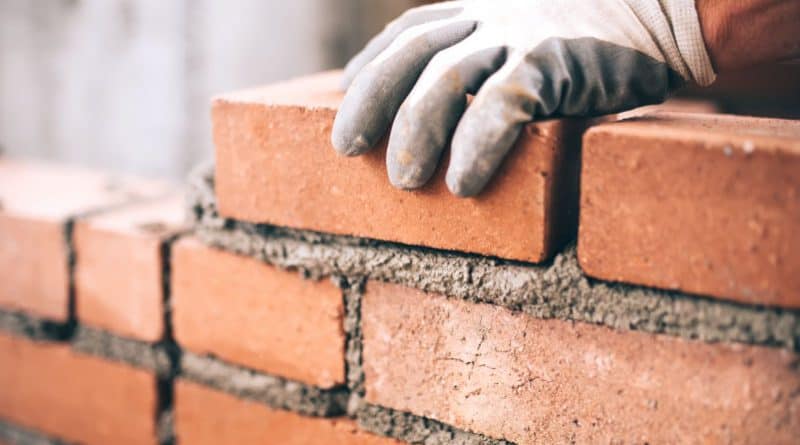Housing activity returns to growth as restrictions ease in April
The Ulster Bank Construction Purchasing Managers’ Index® (PMI®) – a seasonally adjusted index designed to track changes in total construction activity – rose to 49.3 in April, up sharply from the reading of 30.9 in March and only just below the 50.0 no-change mark.
Where activity increased, panellists linked this to the relaxation of restrictions on residential work and pick-up in new orders. On the other hand, COVID-19 measures continued to cause declines in activity at other firms, with commercial work still restricted in April. Index readings above 50 signal an increase in activity on the previous month and readings below 50 signal a decrease.
 Commenting on the survey, Simon Barry, Chief Economist Republic of Ireland at Ulster Bank, noted that: “The April results of the Ulster Bank PMI survey have provided a number of encouraging signals on the performance of Irish construction firms at the start of the second quarter. The overall PMI rose to a 4-month high, and though it remains below the breakeven 50 mark, at 49.3, it is now back to levels consistent with near-stable activity following the severe weakness experienced during the lockdown-restricted first quarter. Offering particular encouragement was a very welcome return to expansion in residential activity, with the Housing PMI rising to its highest level so far this year. The easing of restrictions on housing construction which took effect last month has clearly unleashed a return to more positive activity trends in a key area.
Commenting on the survey, Simon Barry, Chief Economist Republic of Ireland at Ulster Bank, noted that: “The April results of the Ulster Bank PMI survey have provided a number of encouraging signals on the performance of Irish construction firms at the start of the second quarter. The overall PMI rose to a 4-month high, and though it remains below the breakeven 50 mark, at 49.3, it is now back to levels consistent with near-stable activity following the severe weakness experienced during the lockdown-restricted first quarter. Offering particular encouragement was a very welcome return to expansion in residential activity, with the Housing PMI rising to its highest level so far this year. The easing of restrictions on housing construction which took effect last month has clearly unleashed a return to more positive activity trends in a key area.
“Housing was the only sub-sector to experience a return to growth last month, albeit that the pace of decline eased notably in both commercial and civil engineering. Looking ahead, this month’s keenly-awaited reopening of the wider sector, underpinned by a sizeable expansion in overall new business flows in April, should promote a broader strengthening of the overall sector’s activity trends beyond housing. Indeed, firms remain highly confident about prospects for the coming year, with almost 60% of respondents continuing to expect that activity will rise in the coming 12 months, helped by the lifting of COVID-19 restrictions and the release of more pent-up demand.
“While the improving outlook is certainly very welcome, one note of caution came in the form of a further acceleration in the rate of input cost inflation. This now stands at a near 17-year high, in part reflecting adverse supply chain impacts from Brexit, the pandemic and the recent blockage of the Suez Canal.”
Renewed rise in residential activity
Reflecting the loosening of restrictions in April, housing activity expanded for the first time in four months, and at a marked pace. Elsewhere, however, activity continued to fall, particularly on commercial projects.
New business expands
New business expanded in April, thereby ending a three-month sequence of contraction. New orders were up markedly amid the release of pent-up demand as some parts of the sector were able to resume work. The COVID-19 pandemic continued to cause falling new orders at other companies, however.
Firms take on extra staff
Looser restrictions and higher new orders led construction firms to take on extra staff, with job creation recorded for the first time in the year-to-date.
Similarly, purchasing activity stabilised following sharp falls over the first three months of the year. Where input buying increased, panelists often linked this to the reopening of residential sites.
Construction firms continued to face severe supply-chain disruption when purchasing inputs. The latest substantial lengthening of lead times reflected the COVID-19 pandemic, Brexit and global shipping issues such as the blockage of the Suez Canal.
These supply issues resulted in a further acceleration of the rate of input cost inflation. The latest increase in input prices was the fastest since July 2004, and among the strongest in the survey’s history. Higher shipping costs and rises in prices for items such as steel and timber were reported.
Business confidence was unchanged from the two-and-a-half year high posted in March. A further loosening of COVID-19 restrictions and release of more pent-up demand is predicted to support growth of activity over the coming year, with more than 58% of respondents expressing a positive outlook.

